humans and creatures alike have asked me on numerous occasions how i post-process my art or what i do to make it look "like that." this page is for those people! and those who were too scared to ask. happy image-mangling!
also, if i'm wrong about any technical stuff in here, let me know! message me on my tumblr or twitter.
---------- Software ----------
ntscQT
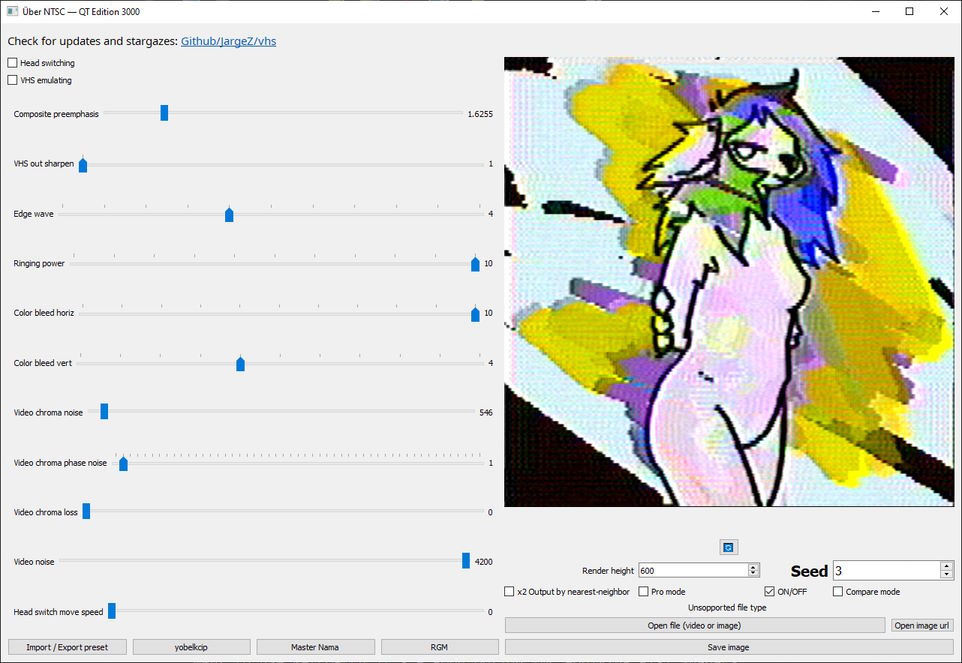
ntscQT is a VHS effects tool that allows the user to go further in depth than most. personally, i use this tool sparingly since i don't always like the look of it, but there's a lot of parameters to play with and happy accidents can occur.
Retroarch
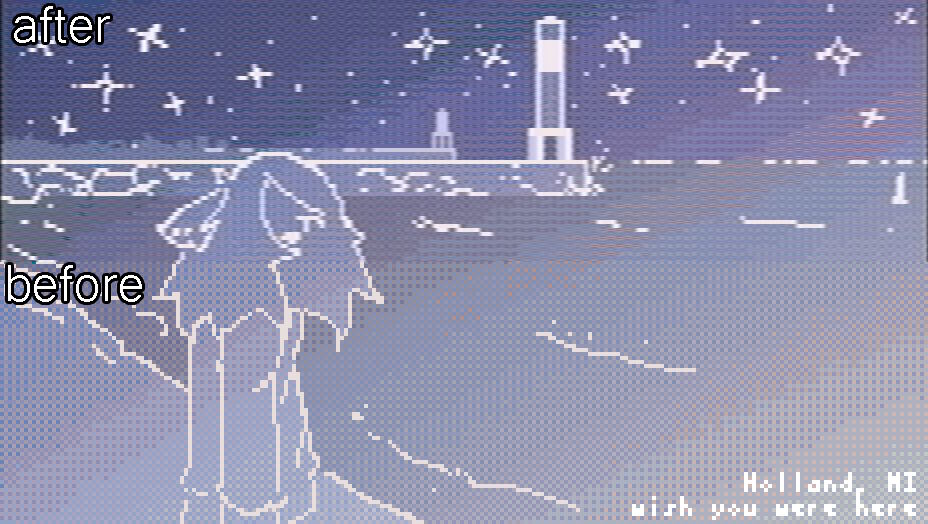
retroarch is a multi-system emulator. this doesn't seem to pertain to post-processing, but it includes an image viewer along with a host of shaders that can be applied to whatever is on-screen. This opens up loads of effects possibilities, such as CRT, VHS, NTSC, Composite, and plenty of others i haven't fully explored. Load your image by going to Main Menu -> Load Content, and apply shaders by re-opening the menu (F1 on keyboard) and going to Quick Menu -> Shaders -> Load.
as an alternative to retroarch, you can also try ShaderGlass, but it is a bit more finnicky and i didn't have much success with it.
jpg-glitch
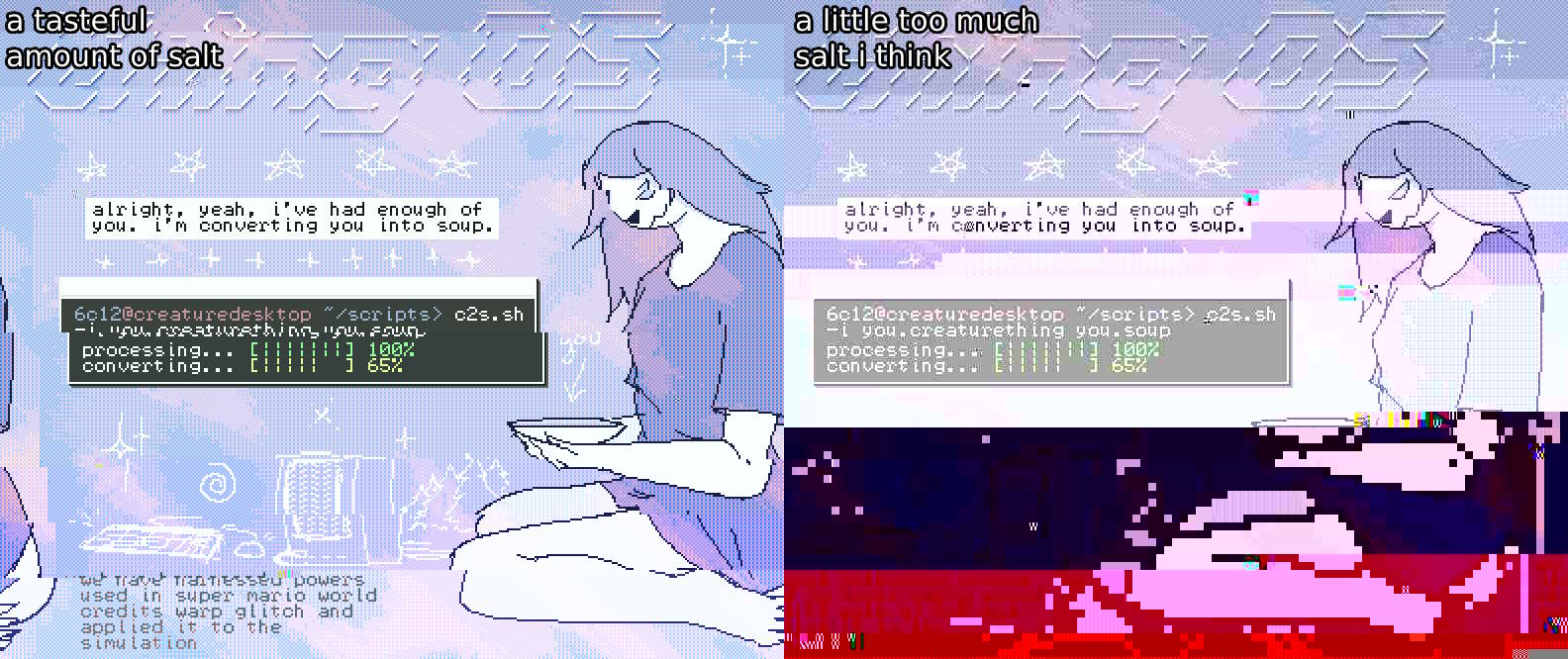
this used to be one of my favorite tools. it basically does jpg databending for you, and offers much more control than most if not all other methods.
G'MIC
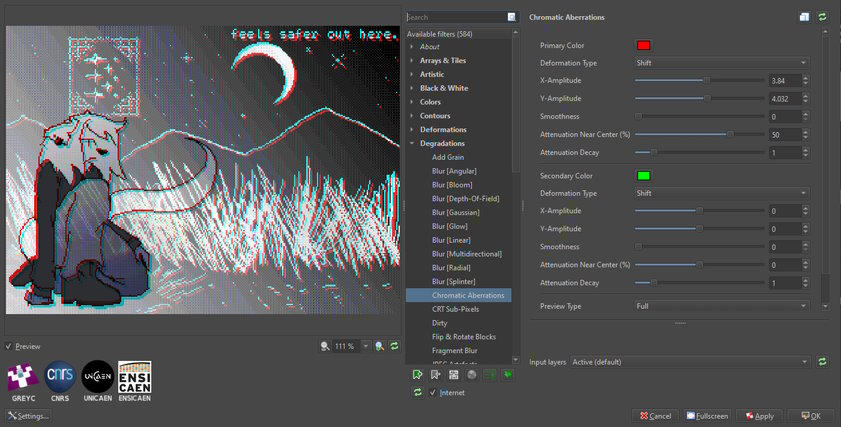
g'mic is an open-source image processing framework/effects suite compatible with GIMP, Krita (built-in), Photoshop, Paint.NET, and a few others. there are a lot of effects, but i mainly use pixel sort and chromatic abberation.
databending with text/hex editors, audacity
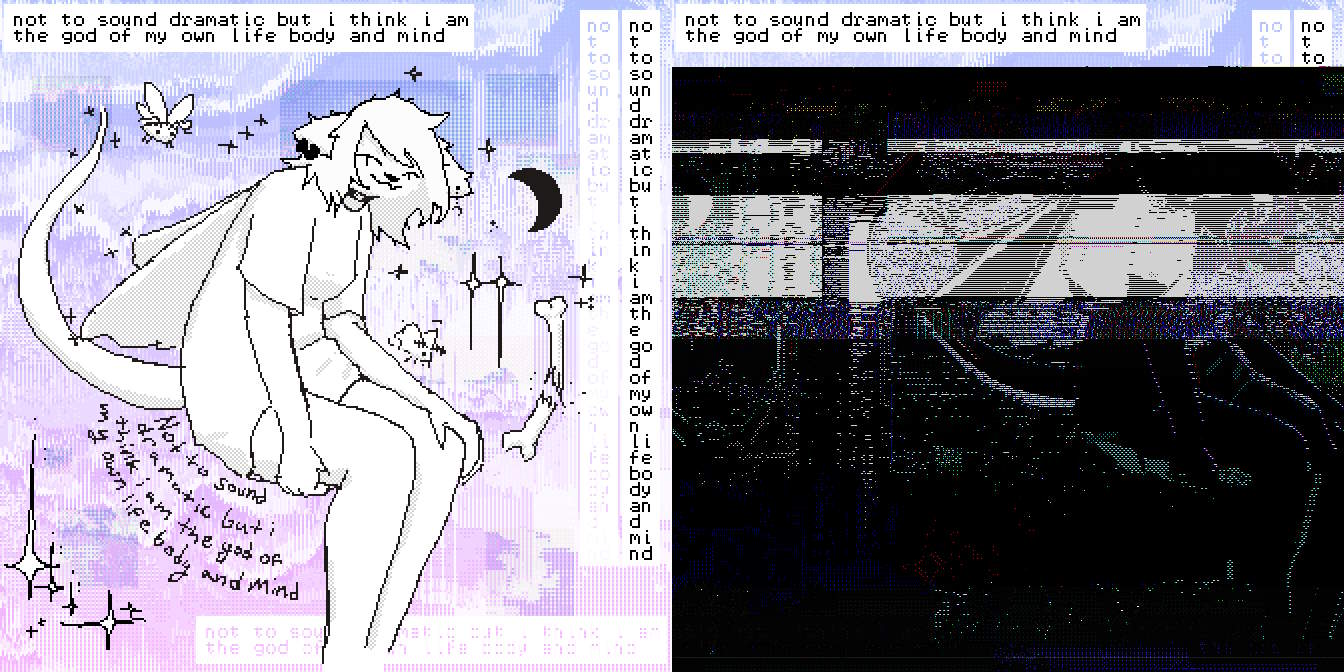
turns out you can edit values in an image file and, if it doesn't straight up break it, some wacky things can happen!
it's as easy as it sounds, with some caveats. files have "headers", which are additional information about a file that tell the computer what the fuck it's looking at. if this part gets messed up, usually the file is unopenable. it takes some mistakes to identify where headers are in a file, but generally just leave the first few chunks of the file alone. also, files aren't really meant to be manually edited like this, so make plenty of backups. things will break and it'll be glorious/infuriating.
you can also do this with audacity, applying an audio effect across an entire file, which can lead to interesting results. this tutorial here is a great start.
the world of databending/datamoshing goes deep, and if you're interested in learning more, there's plenty of resources to be found on the internet.
an actual CRT

i could leave this at "get a crt", but there are some particulars when using this method. to get a decent photo, you'll need to adjust your camera's shutter speed to match its refresh rate. it's probably good to start with 1/60 or 1/30, but depending on the CRT there may be a different ideal shutter speed.
---------- Techniques ----------
layer blending
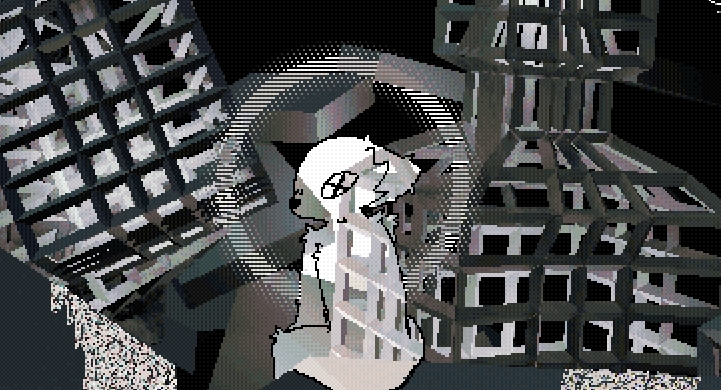
this is something that most drawing/image editing programs with layers have, but they vary in the extent of options given to you. Krita has by far the widest range of possibilities for layer blending in my experience, and it's free (and my art program of choice). this technique is just how it sounds, mess with layer blending! you can go real crazy with it. stack layers with different layer blending modes, the world is your oyster.
color indexing/dithering
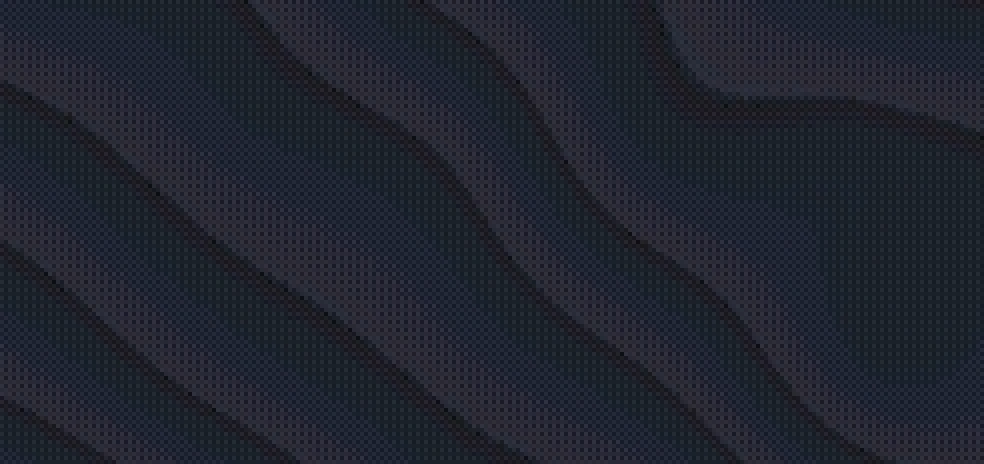
the basic concept of this technique is limiting the colors in the image. Krita's palletize tool allows you to limit the colors of a layer to the colors in a palette, in Paint.NET there's Quantize, in Photoshop you can "save for web" and reduce the amount of colors. the main point of this, in my art, is to introduce dithering. because it makes my brain tingle.
---------- combining everything ----------
obviously, i usually don't just apply one or two of these effects and call it a day. some extreme effects, such as datamoshing, can make a drawing visually unreadable, effects like dithering will be less interesting or visible in higher resolutions (or crash Krita, be careful). i go through many iterations and play with different effects, layering them, masking them out in certain areas, making them more subtle, making them work with the composition, etc.
i treat post-processing the way i treat synthesizers. there's so much room to play and make unusable patches that you can learn from to make more usable patches. there are infinite possibilities and knobs and ways of using one part of your synth patch to modulate another part of it.
fuck around and find out ::::)